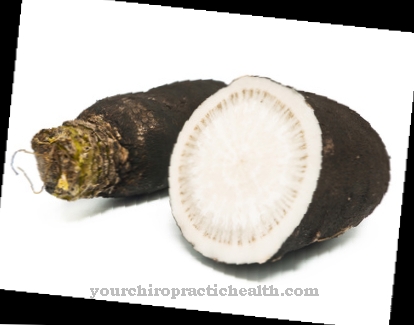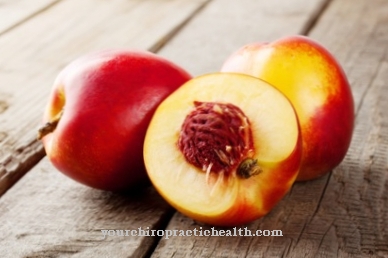Sheep milk is also known as Sheep milk or Sheep milk. Today it is mainly used to make cheese or yoghurt.
What you should know about sheep's milk

Sheep and goats are some of the oldest domestic animals in human history. They were domesticated and used for food production more than 9000 years ago. Due to the low demand and the numerous possible uses, sheep farming is now widespread worldwide.
However, around half of the world's total sheep population is found in developing countries. Sheep can be used to produce wool, meat and milk. In Germany, sheep are mainly used to maintain the landscape. They keep the dyke grass and the meadows in nature reserves short. Sheep's milk is the only source of milk in some parts of the world. In many countries in North Africa and the Middle East, cow's milk is almost unknown. Sheep's milk is traditionally drunk here and processed into cheese and yoghurt. In Europe, sheep's milk is produced in Greece, Italy, France and Spain. Around five million sheep live in Greece. These produce 558,000 tons of sheep's milk per year.
Half of the milk obtained is processed in dairies. Well-known cheeses such as the Greek feta or the French Roquefort are made from sheep's milk. In Italy sheep are used in dairy farming mainly around Rome, Sardinia and Sicily. The Italian sheep's milk is processed into pecorino cheese or other types of cheese. A part is exported.
There are basically three types of husbandry in the sheep milk industry. Around 20 percent of the sheep population is in the hands of traveling shepherds. The locations of the sheep are usually changed seasonally. Almost half of all farm sheep live in paddock and single sheep farming. The pastures are fenced here. Either standing pastures or rotating pastures are used for this. In the location-specific herding system, the animals are kept indoors in winter. In the summer, nearby pastures are used.
Sheep typically give milk 150 to 180 days after birth. The lactation period depends on feeding and husbandry. On average, the sheep give 200 to 400 liters of milk during this time. Sheep that have been specifically bred for milk yield give twice as much milk. The lactation period for these sheep is eight months.
Importance to health
Sheep's milk is similar to cow's milk in its composition. However, sheep's milk contains more vitamins A, D, E, B6, B12 and C. It also contains riboflavin. Vitamin A plays an important role in the visual process.
Vitamin D is a hormone rather than a vitamin. It is involved in numerous metabolic processes in the body and is important for a healthy and stable bone structure. Vitamin B12 helps keep the nervous system healthy. Anemia can develop with a B12 deficiency. Vitamin C is a powerful antioxidant that can eliminate cell-damaging free radicals.
Despite the higher nutritional values, sheep's milk is neither healthier nor more digestible than cow's milk.
Ingredients & nutritional values
The exact composition of sheep's milk depends on the feed and the breed. 100 grams of sheep's milk contain 83 grams of water. Proteins are represented with a proportion of 5 grams. The fat content is quite high at 6 grams per 100 grams. Sheep's milk contains almost twice as much fat as cow's milk. Long-chain saturated fatty acids such as palmitic acid or oleic acid are most strongly represented.
Polyunsaturated fatty acids such as linoleic acid and linolenic acid, on the other hand, only make up a small proportion. The percentage distribution of saturated and unsaturated fatty acids is very similar in cow's milk. There is hardly any difference between cow's milk and sheep's milk in terms of cholesterol content. Sheep milk contains 11 milligrams of cholesterol per 100 grams.
The protein content of sheep's milk is around 5 grams per 100 grams. Here, too, sheep's milk is superior to cow's milk. When it comes to whey proteins, a distinction can be made between ß-lactoglobulins and α-lactalbumin. Sheep's milk contains only ß-lactoglobulin A. When the milk is acidified, the protein casein is precipitated. The total content of caseins in sheep's milk is higher than in cow's milk. The largest proportion is made up of β-caseins and α-caseins.
Caseins and milk proteins differ in their amino acid composition. Milk protein contains many essential amino acids such as threonine, isoleucine and lysine. Tryptophan is also found in sheep's milk. Just like cow's milk, sheep's milk has a high biological value due to its high content of essential amino acids.
Intolerances & allergies
Due to the higher content of ß-lactoglobulins, sheep's milk appears to be easier to digest than cow's milk. However, cow's milk intolerance is largely based on intolerance to ß-lactoglobulin, casein, α-lactalbumin, immunoglobulin and serum albumin. Since sheep's milk has a similar composition to cow's milk, the intolerance potential of both types of milk is comparable.
It is also assumed that there are cross-reactions between the proteins from cow's milk and from sheep's milk. According to this, people who have previously only drunk cow's milk can be allergic to sheep's milk. Sheep's milk also contains lactose. Lactose intolerant people can tolerate it just as little as cow's milk. The same goes for goat milk.
Shopping & kitchen tips
The keeping of dairy sheep is still a niche market. Nevertheless, sheep's milk and products made from sheep's milk are increasingly in demand. The processing and marketing of sheep's milk is mostly carried out by the milk producers themselves.
There are hardly any dairies in Germany that buy and process sheep's milk. Sheep's milk and products made from sheep's milk are therefore more likely to be found in farm shops, organic markets or weekly markets. Sheep's milk is not particularly heat stable due to its high protein content. It is not suitable for high heating and therefore does not keep as long as cow's milk. This should be considered when buying and storing. Sheep's milk should always be stored in a dark and cool place. Butter made from sheep's milk also has a limited shelf life. It goes rancid after just under a week. The creamy and fine structure is similar to that of goat butter.
Traditionally produced sheep's cheese has a much longer shelf life. But be careful when buying. For a cheese to be called sheep's cheese, it only has to contain 15 percent sheep's milk. Cheeses with an organic seal offer greater security. The milk for organic sheep's cheese must consist of 100 percent sheep's milk. Other types of cheese that are traditionally made from sheep's milk are the Gupferl fresh cheese and the Liptov cheese from Slovakia. Roquefort and Gorgonzola also usually contain goat or sheep milk.
Preparation tips
Sheep's milk can be drunk straight, just like cow's milk. The taste is described as mild and sweet. Sheep's milk cheese goes well with many dishes. The Greek feta goes well with salads or olives. It is also suitable for gratinating casseroles. Roquefort and Gorgonzola give Mediterranean dishes a particularly spicy aroma, but they also go well with grapes or figs.

























.jpg)

.jpg)
